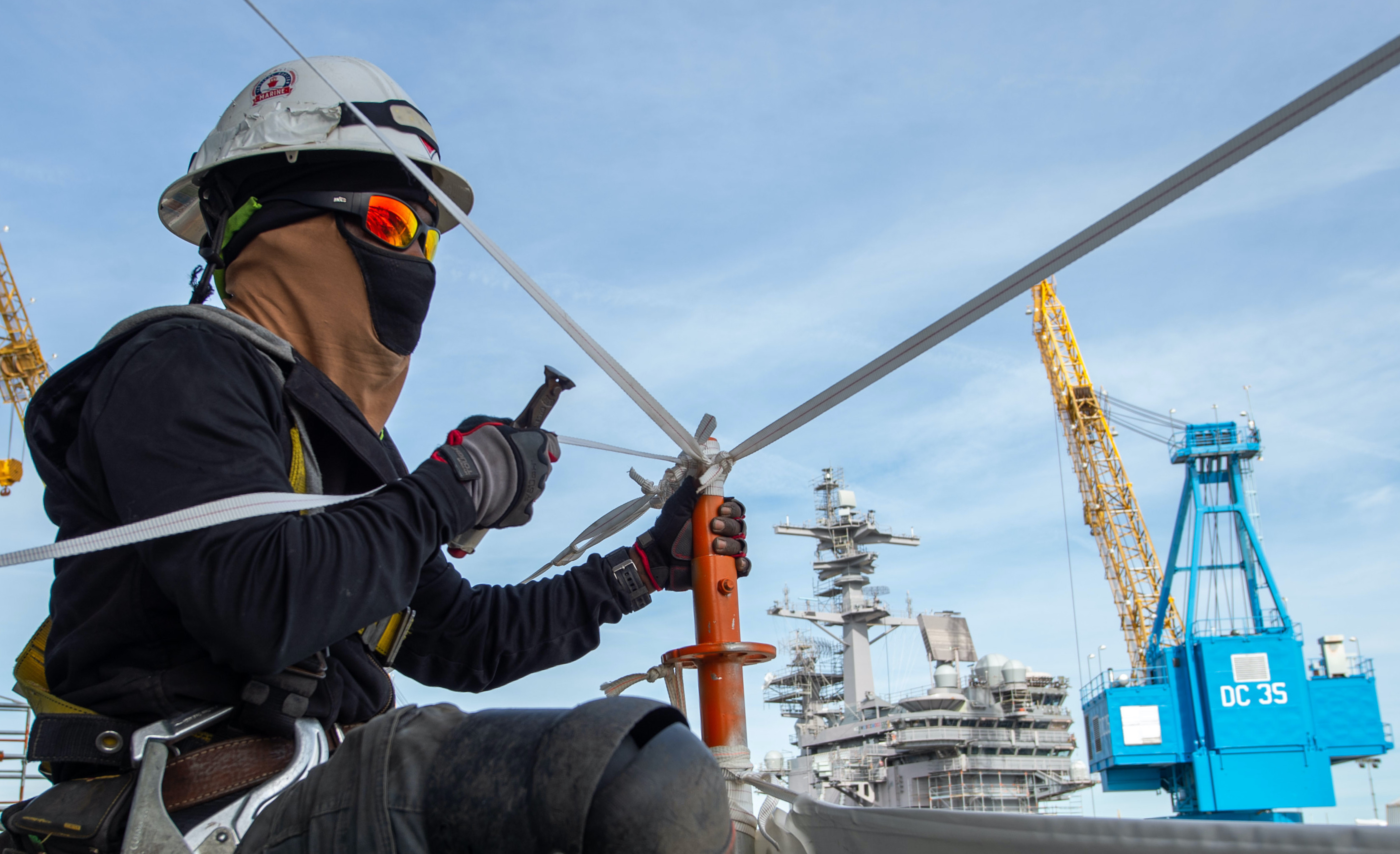
A panel of Navy experts is hopeful that discussions around the future naval fleet will focus on big-picture questions – how will the Navy and the nation pay for modernizing the sealift fleet, do unmanned craft count as ships, and how does the sea service balance the needs of small and large shipyards as it builds and maintains the fleet – instead of getting stuck on debates over exactly how many ships of each class the Navy needs for its future force design.
The Navy League hosted a panel discussion last week centered around its newest Maritime Policy Statement, produced every other year to outline the Navy League’s legislative agenda. Keynote speaker Bob Work, a former deputy secretary of defense and undersecretary of the Navy, praised the report for concentrating on policy instead of the nitty gritty details of ship counts, which he called a “numbers game.”
Work, who is also the chairman of the board of the U.S. Naval Institute, said a fleet of 355 ships, which is what the report is based on, is “now the law of the land” but that “whether you count unmanned ships [in sizing the fleet] is very important.”
This is a point Congress has increasingly made as it looks at robotics and autonomy in future combat. Work noted the Navy League report skipped over the question of whether unmanned ships should be counted. “It’s a policy issue” that should have been addressed, he said.
Work pointed to another policy issue he hopes lawmakers will finally tackle: recapitalizing the sealift fleet.
He said of the commitment in the Pentagon and on Capitol Hill to modernizing the sealift fleet, “it’s always next year, another study,” rather than addressing the problem of an aging fleet with serious readiness problems. “We’ve gotten to the point where we’ve got to do something,” he said.
Bryan McGrath, who was involved in writing the report and is the managing director of FerryBridge Group, added that “sealift and logistics [are] things that sometimes get forgotten.”
In discussing the report, retired Rear Adm. Sinclair Harris, the Navy League national vice president, said the organization’s top three priorities for the Navy are the building of the Columbia-class ballistic missile submarine, providing necessary funding to maintain readiness and lethality and “[funding] an aggressive shipbuilding plan.”
Harris added that the “aggressive shipbuilding plan” applied across the board to the “national fleet” extends beyond Navy and Coast Guard to include sealift and more.
It’s unclear if the Biden administration will support such a plan. The Pentagon’s Director of Cost Assessment and Program Evaluation is scrutinizing the Fiscal Year 2022 budget submission and long-range shipbuilding plan that the Trump administration previewed in December, which included increased shipbuilding funding compared to the FY 2021 president’s budget request.
Deputy Defense Secretary Kathleen Hicks during her confirmation hearing said the Trump administration’s plan “would require further analysis to validate the numbers” above 355 manned warships and its estimates of future unmanned vessels.
Work said there “is going to be intense competition for resources” in the Biden administration, which has set its top spending priorities on combating the COVID-19 pandemic and economic recovery. He noted that progressive Democrats are calling for $70 billion cuts in one year from the Pentagon budget, while moderate Democrats are looking for $30 billion in cuts to cover the expected domestic costs.
While DoD is performing its review, new questions have been raised about American private shipyard capability and capacity and the viability of second-tier suppliers in the defense industrial base.
Work said shipyards are key enablers as the United States “is on the cusp of a maritime competition with China.” He added he would put more priority on building up the shipbuilding industrial base capacity than he would on focusing on the exact number of ships the Navy needs in the future. Among the points he raised was the need for more submarine-building capacity and graving docks for construction, maintenance and repair. There are fewer public and private yards that remain that can do that Navy work compared to several decades ago. He said he was disappointed that the Navy League report did not highlight the Navy’s 2018 Shipyard Optimization Plan, which looks to overhaul the four public shipyards and increase their efficiency and throughput.
McGrath added at the forum that “the 40-year experiment” of concentrating Navy shipbuilding work at shipyards that “can do large, complex construction” like aircraft carriers, submarines and large surface combatants has come at a price to smaller yards.
Adding to the difficulties faced in smaller yards is the ending of contracts to modernize Jones Act ships, which are American merchant vessels, and build the Coast Guard’s National Security Cutter and Offshore Patrol Cutter programs, according to Bryan Clark of the Hudson Institute.
Without new work orders, Clark warned during the event that this “could lead to a decade of decline for smaller yards,” more consolidation and loss of work force.
Complicating matters for large and small shipyards has been the impact of the pandemic on second-tier suppliers for items that are commonplace but important to shipbuilding and ship repair, like O-rings, the mechanical gasket creating a seal, McGrath said.
Orders for the light amphibious warship (LAW) and replacements for the Navy’s patrol craft could bring possible bright spots for the smaller yards and vendors, McGrath said. The Navy League listed construction of LAW as its top Marine Corps priority in the policy paper.
McGrath and Clark agreed these smaller craft can play a key role in competition with the Chinese in its gray zone maritime provocations, from harassing other nations’ fishing fleets and energy exploration vessels to asserting its territorial claims.
“Competition is what the Navy does 99.4 percent of the time,” not high-end combat, McGrath said.





